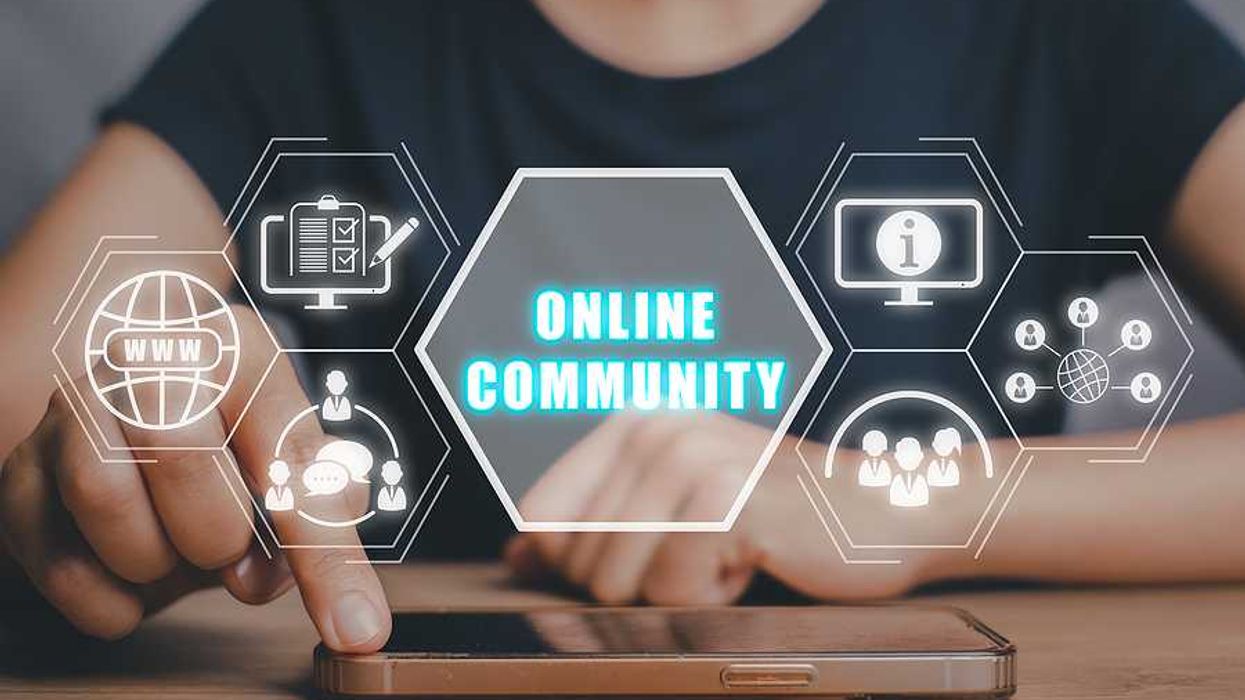
For many professionals, the tech industry has played a huge role in their ability to make an almost seamless transition from working in office to working from home during the COVID-19 pandemic. Like any major disruptor, this global crisis is sparking change and innovation. So, what tech trends should we expect to see post-COVID-19?
Here are the tech trends leading executives in the industry say we should watch out for.
Steve Barriault, Global Technology Sales Executive

Bigstock
First, I think that COVID-19 only accelerated and expanded a trend that was present before the pandemic: remote workers. Many employers were initially suspicious of this trend, and may even have thought it was a fad. But many companies had to adapt, and the fact is many learned this was quite doable. Furthermore, many workers highly value the ability to do remote work for part or all of the week. When the economy returns to full employment, organizations may have no choice but to follow suit to attract the best and brightest.
The upside for employers is that it will be possible for these workers to be productive pretty much anywhere, at a moment's notice, and this will prove to be highly valuable to companies.
However, having more remote work done will put added pressure on the IT infrastructure, such as VPN and remote collaboration tools, to perform. In many cases, we saw these tools buckle under the added stress. A renewed interest in software quality will be required for these tools to meet heightened reliability requirements. They will need to be developed and tested in a much more systematic fashion. That will further accelerate the trend toward DevOps.
Supporting many more "nomad workers" will also mean that IT departments will need to cope with a more challenging landscape. If a remote employee faces issues, it will not be okay to wait for that employee's next visit to the office before solving the problem. Sure, remote administration tools will help. But relying solely on these will cause cases to pile up in IT. There will be a need for more IT training, so employees themselves will ensure the first line of support. Better, highly intuitive diagnostic tools are very much needed to cope with the challenge.
We should not forget that for many, remote working will still not be an option. Even with a hypothetical vaccine, people will remain skittish about working too close to fellow workers for months or years. That will probably prompt a new round of investment in automation across the board. Likewise, any technology that will reduce interactions among workers will be in high demand.
Steve Barriault is a global technology sales executive with 18+ years of experience in business development on three continents. He is currently serving in a 3,000 employee-strong company providing embedded software testing solutions in multiple industries such as automotive, avionics, industrial systems, telecom, and others. Multilingual, he holds advanced degrees in business, science, and computer science.
Duncan Prior, Senior Business Consultant

Bigstock
I believe there are three post-COVID-19 tech trends to watch. For two of these, the pandemic will accelerate the adoption and the third, collaboration, has been caused directly by it.
Data and Analytics
The Economist Technology Quarterly recently summarized the progress made so far in the world of data and analytics and also discussed the current 'reality check' in the world of machine learning. Significant investment has not always yielded results and has led to disappointment. Nonetheless, the opportunities to reap the significant benefits of AI are still there and will move to the forefront of organisations' strategies.
Digital Disruption
Evolving IT will be a thing of the past. For example, technology hardware providers will move more rapidly to offering consumption-based models in order to keep pace themselves with the industry developments. This will force the purchasers of technology to move to this approach.
Similarly, speeding up the move to electric cars fitted with ADAS (Advanced Driver Assistance Systems) features will be a key element of the economic recovery, which will force insurers to design usage-based products.
Collaboration
Working from home has created a huge opportunity to reflect on work-life balance which many have seized and has also presented a variety of challenges for others. The overall effectiveness and productivity of teams and the use of the collaboration tools on offer has been impressive, though. There have been some long overdue tweaks as well, such as shortening meetings and reviewing their purpose. However, this is only the start and companies will look to adopt a much more rigorous approach to the use of collaboration tools.
Duncan Prior is a senior consultant at BML Digital with 20+ years experience specialising in digital transformation delivery. He has most recently been leading the development of predictive analytics products for the insurance industry at LexisNexis Risk Solutions. His background is in solution consulting with IBM and rapid application development pioneers, Cambridge Technology Partners, managing teams of 10-25 and budgets of £2m. Switching to industry he built technology partnerships as an IT director with companies such as Kainos, Oracle, and Experian to deliver innovation for organisations in education and investment management and savings of £1m.
Amy Hinderer, Business Management & Operations Executive

Bigstock
As we have seen, technology trends have rapidly gained momentum during COVID-19. E-commerce is one of the big trends that has gained enormous popularity. The ability to shop and purchase goods or services online and have them delivered directly to your doorstep via robotic technology or another form of contactless delivery is now a reality instead of wishful thinking. The online marketplace is here to stay and considered a "must-have" as opposed to a "nice-to-have."
Robotics is another huge area that will continue to see demand increase. The healthcare industry has leveraged robotic technology for ultraviolet cleaning on demand. The hospitality industry has started using contactless delivery bots to deliver fresh towels, extra pillows, or groceries to their guests. Look for more innovation in this arena.
Cloud technology has seen a surge in usage across the board especially as companies adopt the work from home strategy. Cloud-based video conferencing will continue to be high in demand resulting from online learning models.
As more and more people work remotely, business data becomes more vulnerable to cyber attacks. It is incumbent upon companies to review their current cyber security practices, identify and document areas for improvement, and implement the required changes.
Next, the implementation of blockchain technologies across industries will expand. For example, in the healthcare industry, we can implement blockchain to monitor and deliver pandemic supplies, collaborate with companies to aid in research, or to build contract-tracing apps directly into the platform, all without comprising user data.
Lastly, Virtual Reality (VR) and Augmented Reality (AR) will continue to become the mainstays in the new normal. This advanced technology has enabled businesses to train employees, collaborate with others, and host virtual conferences. On a personal level, individuals are using this technology in other ways such as gaming, exploring new travel, or participating in other online entertainment during quarantines.
Change is the only constant that we can ever count on. Innovative and emerging technologies will continually be developed to adapt to our ever-changing world.
Amy Hinderer is a business management & operations executive with 18+ years of experience in global enterprise and start-up businesses. She has managed teams ranging in size from 10 up through ~35K supporting revenues between $2M - $9B.
There are many tech trends to watch for post-COVID-19. Sometimes the biggest disruptions can provide the greatest motivation for change. And, according to the industry experts above, more change is to come.
Ready to take your executive presence to the next level? Check out Work It Daily's Executive Presence Program today!
- 6 Ways To Stay Relevant In An Ever-Changing Job Market - Work It ... ›
- JT Talks Jobs - 5 Skills In Demand After COVID-19 - Work It Daily ... ›
- 6 Technologies To Improve Your Career During COVID-19 - Work It ... ›

 Bigstock
Bigstock
 Bigstock
Bigstock
 Bigstock
Bigstock



